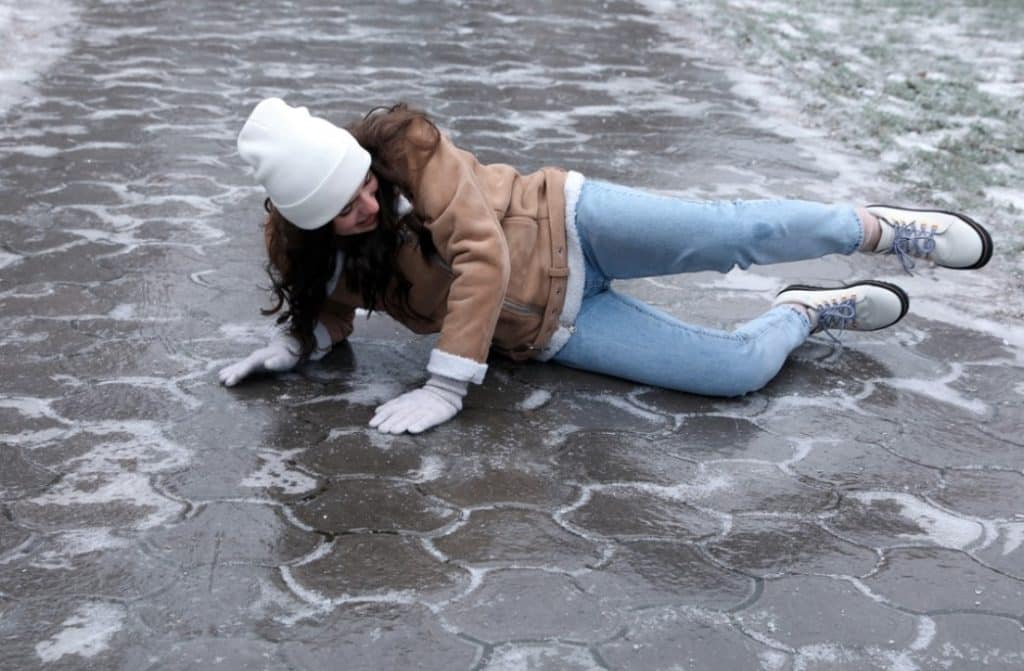
As winter storms continue to impact businesses across the country, property owners and managers must take proactive steps to ensure the safety of their premises. With several winter storms already disrupting operations—and more likely to come before the season ends—businesses cannot afford to ignore the risks associated with untreated walkways.
If you do need a testifying weather expert, you can contact one here
The Legal Responsibility of Business Owners
Under premises liability laws, businesses must maintain safe conditions for customers, employees, and visitors. This includes taking reasonable measures to prevent slip-and-fall accidents caused by ice, snow, and untreated walkways. Failing to do so can result in lawsuits, costly settlements, and damage to a company’s reputation.
Key Reasons to Treat Walkways Before and After a Storm
- Prevent Slip-and-Fall Accidents – Ice and snow create hazardous walking conditions. Proactively salting, sanding, and shoveling walkways reduces the risk of injuries.
- Mitigate Legal Risk – If an accident occurs on an untreated surface, your business could be legally liable for negligence.
- Maintain Business Operations – Unsafe walkways may deter customers and employees from entering your business, leading to lost revenue.
- Comply with Local Ordinances – Many cities and states have snow removal regulations that require businesses to clear walkways within a specific timeframe.
- Reduce Insurance Costs – Frequent claims related to winter hazards can lead to increased insurance premiums or even policy cancellations.
What Happens If You Don’t? The Role of a Forensic Meteorologist in Lawsuits
A forensic meteorologist may be called upon to provide expert testimony if your business is sued after a winter-weather-related accident. These professionals analyze historical weather data, radar records, and snowfall rates to determine if hazardous conditions were present and whether a business took appropriate action.
A forensic meteorologist can:
- Verify snowfall amounts and icing conditions at the time of the incident.
- Assess whether weather conditions warranted preemptive de-icing.
- Provide reports to support or dispute liability claims.
Failing to treat walkways can leave businesses vulnerable in court, where forensic weather experts often provide crucial evidence in premises liability cases.
Best Practices for Winter Weather Walkway Maintenance
To protect your business from liability, follow these best practices:
✅ Pre-Treat Surfaces – Apply de-icing agents like salt or sand before a storm to prevent ice formation.
✅ Clear Snow Promptly – Shovel or plow walkways, parking lots, and entryways as soon as possible after snowfall.
✅ Use Ice Melt Effectively – Reapply salt or sand after clearing snow to prevent refreezing.
✅ Document Your Efforts – Keep records of snow removal times, temperatures, and any maintenance actions taken.
✅ Monitor Weather Conditions – Stay informed about winter storm warnings and adjust maintenance efforts accordingly.
Winter is far from over, and businesses must stay vigilant in their snow and ice removal efforts. Ignoring these responsibilities can lead to severe legal and financial consequences. Proactive snow and ice management ensures safety and protects businesses from costly litigation.
If a lawsuit does arise, be prepared—a forensic meteorologist may become a critical resource in defending or proving liability claims. Taking preventative measures now can help avoid legal trouble later.
The author of this post is not a lawyer. This post is meant to provide guidance on how to help prevent accidents and injuries.
For more weather-related legal resources, visit NOAA Weather and Climate Resources.
